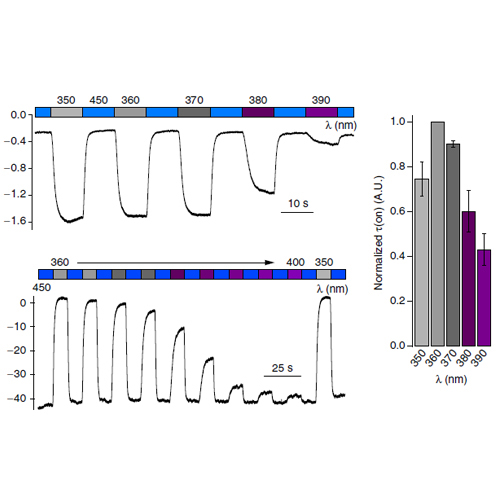Photoswitchable fatty acids enable optical control of TRPV1
22-May-2015
Nature Communications, 2015, doi:10.1038/ncomms8118, 6, Article number: 7118 published on 22.05.2015
Nature Communications, online article
Nature Communications, online article
Fatty acids (FAs) are not only essential components of cellular energy storage and structure, but play crucial roles in signalling. Here we present a toolkit of photoswitchable FA analogues (FAAzos) that incorporate an azobenzene photoswitch along the FA chain. By modifying the FAAzos to resemble capsaicin, we prepare a series of photolipids targeting the Vanilloid Receptor 1 (TRPV1), a non-selective cation channel known for its role in nociception. Several azo-capsaicin derivatives (AzCAs) emerge as photoswitchable agonists of TRPV1 that are relatively inactive in the dark and become active on irradiation with ultraviolet-A light. This effect can be rapidly reversed by irradiation with blue light and permits the robust optical control of dorsal root ganglion neurons and C-fibre nociceptors with precision timing and kinetics not available with any other technique. More generally, we expect that photolipids will find many applications in controlling biological pathways that rely on protein–lipid interactions.











